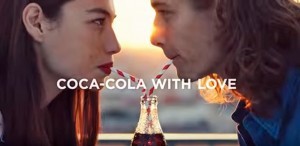Who Do You Take Your Biz Story-telling Cues From?
Let’s assume that one thing you do for your business is you tell stories about your business. You or someone on your team tell stories about how your business originated and why, why it matters to your customers, and why it matters in the early-21st century. You tell stories about your customers and other related people who illustrate what your business does and about your business’s larger message.
Now let’s assume you want to excel at what you do, and one thing you do is tell stories.
Who are you going to take your cues from when you want to excel and how? Are you going to learn from your competition and from your peers? Or are you going to learn from examples way outside of your field and industry?
Your inclination may be to assume the former – the land of the familiar. That’s the assumption of a colleague of mine. A friend of mine offers marketing services to service providers – coaches, online teachers, consultants. He complained to me that much of the advice being given to this audience for content marketing drew from strategies that corporation-sized brand agencies and venture-backed start-ups use.
“Why is that a problem?” I asked.
“Because service providers don’t need those big concepts from those outsized companies,” he said. “They need to understand how to tell stories to their potential customers more intimately, more genuinely.”
Maybe. Maybe not.
Here’s where I have seen many leaders and professionals go astray in our ongoing pursuit not only of excellence but also of new learning. We want examples to feel familiar, attainable, and comfortable. So if we want to do well at web design, we look at other websites that we think we could reasonably create as examples. If we want to excel at playing violin, we look at examples of violinists who play at a level we think we reasonably could attain.
What potentially happens if you take your cues from only what is familiar, seemingly attainable, and comfortable? You set your sites fairly narrowly. Take your cues only from what is familiar and comfortable, and you deprive yourself of possibly one of the most accurate indicators of your ability to come up with novel and useful solutions to ongoing challenges – an openness to experience.
But what if when we want to excel at what we do and how we live and work, we forget for now feelings of familiarity, attainability, and comfort? What if we not compare end results but compare something else entirely? What if instead when we want to learn and excel at our business, we break down what are the skills and frameworks we want to learn?
So, back to story-telling for your business.
You can break down the skills and frameworks that apply to effective story-telling – whether story-telling shows up in a pitch to an angel investor, a book proposal to an acquisitions editor at Random Penguin House, or a blog article to a reader seeking advice for his recurring influenza.
You can develop a frame of mind and a frame of writing or speaking for story that works across all platforms.
And if you can do those things, you can take your cues not from your peers but from examples in other fields and industries wholly not familiar to yours and break down what they do.
One huge advantage to your doing so is you or your business won’t risk sounding or looking like a copycat in your field. It surprises me to see a professional learn from and then more or less copy if not outright steal certain concepts, methods, and frameworks from one of their direct competitors. If you’re going to “steal” ideas, steal from examples completely out of your field.
Quick example: For his monumental “Les Demoiselles D-Avignon,” Picasso did not take ideas from his soon-to-be rival Henri Matisse as much he took from African masks.


Another example: One of Nike’s advertisements moved me to tears. The voice-over pacing, tenor, writing. The music, And the build up to the surprising imagery. That moment came just at the time that I was seeking inspiration for a new video to lead up to a new live event called Your Brave New Story. Our videographer and I jammed back and forth and within 7 days came up with Be Brave. Please: I am in no way comparing our production quality or writing quality to that of Nike’s. But we are not competing with Nike – and that’s the point.
Once you develop a story-teller’s mindset and learn certain story-telling frameworks, well, that’s just one way you or your business responds.
Some of the brands we love – Apple, Nike, airbnb, Samsung, Volvo, Chipotle – tell stories artfully, elegantly, genuinely. And, yes, those advertising campaigns such as Coca-Cola’s latest Taste the Feeling campaign are the results of high-level, high-budget brand agency work, the results of branding teams deeply steeped in how we think and are moved by stories.


So how does a service provider compete in that space? She doesn’t. Why would she? But that doesn’t mean she cannot break down and learn from what these brands do well in terms of story-telling.
What Steve Jobs did with 1984 and what Chipotle did with The Scarecrow and Volvo did with Claude Van Demme in Epic Splits share similar features of Story that we human beings likely are wired to respond to (cue Paul Zak’s research).
So why not learn from them? Why not take cues from them and apply them to your intimately-scaled situation and audience?
Here is my invitation. This week take 30 minutes with members of your team or colleagues of yours and study these three videos.
Doing so lights up that innate drive in us to discover new skills and frameworks and empowers us to excel.
Here is a mini-Story Mindset Study Guide for you and your team:
1. 1984
STYLE: CONCEPTUAL & ALLEGORICAL
How does Apple use opposition to tell a Story of Old (IBM) versus New (Apple)?
What visual elements are contrasted?
What paired words or phrases are used?
At what moment do you feel the strongest emotional response?
How could you or your team use opposition in telling your business’s New Story?
2. Samsung
STYLE: REALISM
How does Samsung’s team employ “realism”?
What’s the emotional effect of following “the day in the life” of a person?
At what moment do you feel the strongest emotional response?
How would you describe the music and how it contributes to the mood versus that of 1984?
How could you or your team tell a “day in the life” story of one of your hero-customers?
3. Chipotle – The Scarecrow
STYLE: IMAGINATIVE & ALLEGORICAL
How does Chipotle’s team use visual opposition to tell a Story of Old versus New?
How do they – not-so-subtly but still artfully – integrate their logo as a “magic tool” for change?
At what moments do you feel the strongest emotional responses?
How is the music intended to contribute?
How does the animation contribute to the theme of “Imagination” and possibilities?
How could you or your team tell a story of how your business does something new in contrast to your competition or existing field?
Pull It Together:
When you study the three examples above, what common elements of Story do you notice?
See: Already you’re on your way to excellence by taking your cues from fairly unfamiliar and seemingly unattainable examples.
Why settle for anything less?